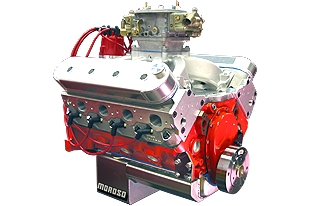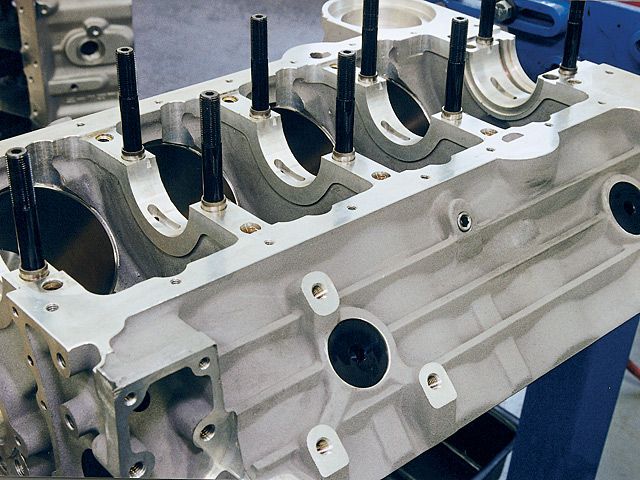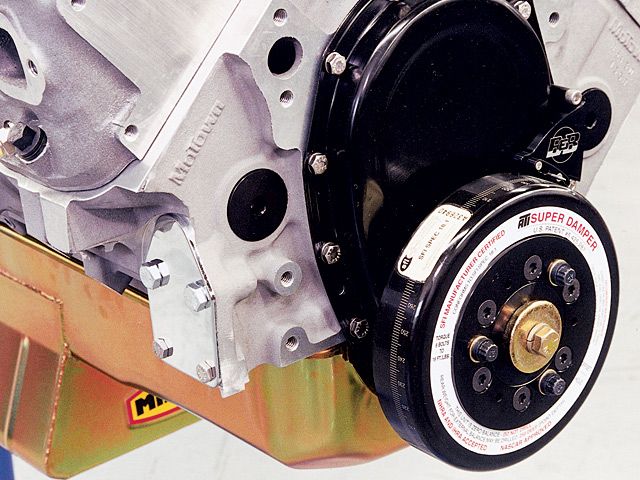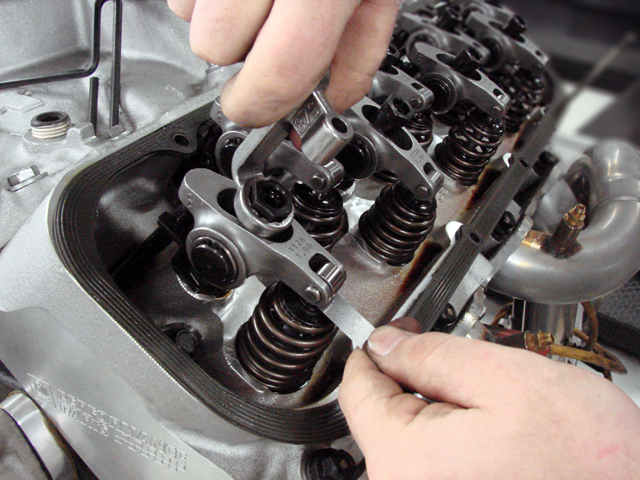Motown LS Engine - Mitchell's Monster
The Founder Of World Products Tampers With Nature To Build A Small-Block/LS Hybrid
From the February, 2009 issue of Hot Rod
By Sid Copeland
Photography by Sid Copeland
Link to Origional Article

Most engine builders play the what if game all the time: "What if the cam were a little higher in the block?" or "What if I could get another 0.250-inch stroke?"
But most engine builders aren't like Bill Mitchell. For the past 35 years, he's made a business out of acting on the what if thoughts that pop into his brain, and that's led his Long Island, New York-based company, World Products, to not only build high-performance street and racing engines but also cast the cylinder blocks, heads, and intakes of which they're composed. That includes Chevy small-block, big-block, and LS-style engines; Ford Windsor-style engines; and, more recently, Chrysler Hemi/wedge blocks.

So when you're the guy actually pouring the molten metal into the molds and you get an idea, you're in a good position to act on it. Mitchell's latest brainstorm is a biggie, too: What if you combined the tried-and-true form of the original small-block Chevy with the great breathing characteristics of modern LS engines? You'd get far easier installation in vintage cars, traditional distributor-triggered ignition (a necessity in many racing classes, especially circle track series), and virtually unlimited airflow possibilities with the LS heads. Too bad LS heads don't fit on a small-block, right? But Mitchell took a few measurements, punched a few numbers on a calculator, and had his CAD designers redesign the small-block's water passages to match the LS head. The result is the Motown II LS (Motown being the name of World Products' standard small-block casting). We recently visited the World Products facility to check it out in person and found more than a theoretical model-we followed the assembly of the first small-block/LS combination and witnessed it put down about 630 hp on one of the company's engine dynos.

Certainly, redesigning the innards of the original small-block was no small accomplishment, but Mitchell pointed out that the rest of the conversion was relatively straightforward and enabled by key similarities between the small-block and LS architectures. Mainly, the 4.400-inch-bore centers shared with both platforms that align the LS heads' combustion chambers perfectly with the small-block's cylinder bores. World also casts the Motown II LS with taller, 9.240-inch decks to match the standard LS deck height (standard small-block deck height s 9.025 inches), allowing the use of off-the-shelf LS intake manifolds.

In fact, only a few truly unique parts are required to build the Motown LS. They include a custom LS-style camshaft lengthened to include a distributor drive gear and fuel pump lobe, an aluminum valley cover that supports the upper mounting position of the heads, and adapter plates for the heads to exit water and provide a standard accessory bolt pattern (a simple crossover tube is used between the blocks' traditional outlets). Just to be clear: You can't bolt LS heads on a Chevy small-block. You can't even do it on one of World's regular Motown blocks. The key is the Motown II LS block with its redesigned water flow characteristics and head bolt pattern.

With the block designed to use LS heads and LS lifter positions, the engine must also be capable of accommodating an LS valvetrain. World worked with Comp Cams to develop one based on the size of a standard-diameter small-block cam. The production LS cam is 55 mm-and the Motown II/LS blocks can accommodate it-but a standard small-block size was needed on this engine to clear the 4.000-inch crankshaft. The Comp camshaft is basically an LS stick with a small-block fuel pump lobe and drive gear at the rear. The block is designed to use LS lifters, which slip into the block small-block-style rather than the through-the-head method of production LS engines. And because the cam is lower in the small-block than the LS and the deck is significantly higher than a regular small-block, 8.200-inch-long pushrods are necessary. Inside the block, LS-style dished pistons were matched with World's Warhawk cylinder heads. The connecting rods and crankshaft are off-the-shelf small-block parts. The 6.125-inch-long rods don't even require machining to be pinned to the LS pistons.





